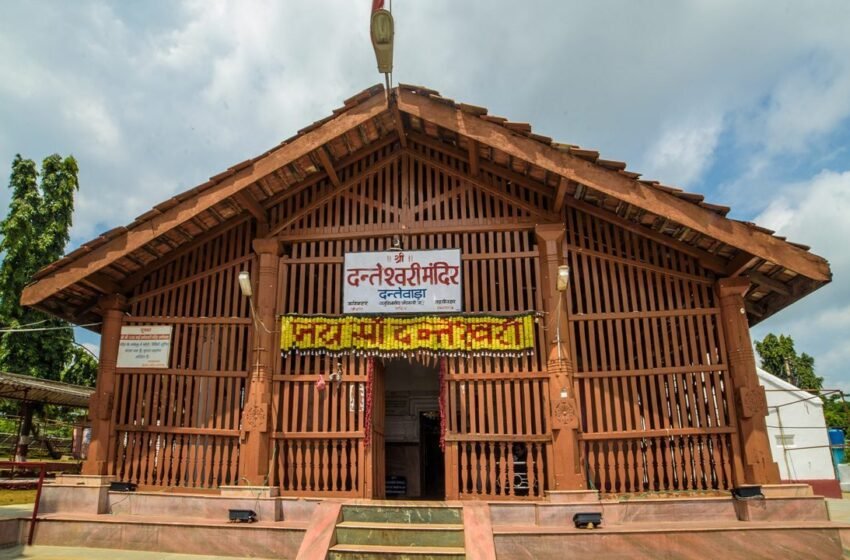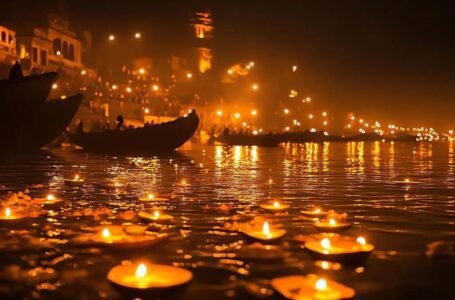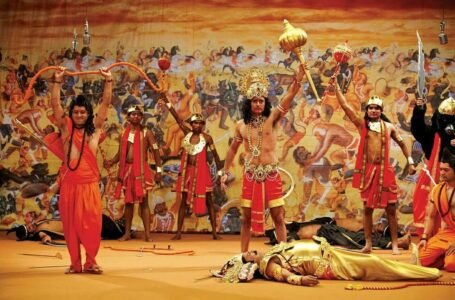The Divine Goddess Danteshwari: The Spiritual Heart of Bastar

The goddess Danteshwari is deeply revered in the tribal region of Bastar, located in the state of Chhattisgarh, India. She is regarded as a powerful deity associated with protection, strength, and fertility, and holds a central place in the spiritual and cultural life of the local communities. The Danteshwari temple, situated in the town of Dantewada within the Bastar region, stands as a sacred symbol of the goddess’s divine presence. It has become a focal point for millions of devotees who visit annually, particularly during major festivals like Dussehra, seeking her blessings and protection.
Danteshwari is celebrated not just for her spiritual significance, but also for her profound connection to the mythology, history, and traditions of the region. Her story, which intertwines ancient legends and tribal folklore, continues to shape the religious practices of the people. In this article, we explore the origins of Danteshwari, the history of the Danteshwari temple, the rituals associated with her worship, and the ongoing cultural and spiritual relevance of the goddess in today’s world.
Danteshwari is often seen as an incarnation of the mother goddess in Hinduism, embodying divine qualities of power, protection, and nurturing. Her roots can be traced back to the ancient struggle between the gods and the demons in Hindu mythology. The name “Danteshwari” comes from the Sanskrit words “Danta,” meaning tooth, and “Ishwari,” meaning goddess. According to legend, the goddess’s tooth became a central symbol in the story of how she protected the region and its people from evil forces. This tale highlights her role not just as a protector, but also as a source of strength and support for her followers.
According to local folklore, Danteshwari is said to have fought a fierce battle against the demon king Dantavakra, who had been terrorizing the region. Using her divine strength, Danteshwari defeated the demon, ensuring the safety and prosperity of the Bastar region. As a symbol of her victory, it’s believed that her tooth, which played a central role in the battle, was enshrined in the temple dedicated to her, making it one of the most sacred and revered sites in the area.
While much of Danteshwari’s early history is steeped in mythology, the worship of the goddess began to take a more defined shape during the reign of the Kakatiya dynasty in the 14th century. Under their rule, the worship of Danteshwari became more formalized, with the Kakatiya rulers playing a key role in establishing the Danteshwari temple in its current form. Over time, the goddess became deeply connected to local traditions, and her prominence grew, solidifying her position as the principal deity of Bastar. This helped anchor her significance in the region’s spiritual and cultural life.
The Danteshwari temple, situated in the heart of Dantewada, is a remarkable example of ancient temple architecture. Its design beautifully blends traditional Indian temple elements with local tribal influences. The temple’s spire is adorned with detailed carvings and statues of various deities, reflecting the rich symbolism of Hinduism, while also showcasing the distinctive tribal art forms unique to the Bastar region. This fusion of styles gives the temple a unique character, making it a true architectural gem.
At the heart of the temple is the sanctum, where the idol of Danteshwari is enshrined. The idol is often portrayed with three heads, representing her diverse roles as a destroyer of evil, a nurturer, and a protector. This powerful image of the goddess serves as a symbol of her strength and compassion. Devotees visit the temple to offer prayers and perform rituals, seeking her blessings for protection, prosperity, and good health. The idol stands as a focal point for their devotion and a reminder of the goddess’s divine presence in their lives.
The Danteshwari temple is much more than a place of worship; it serves as a cultural heart for the tribal communities of the region. It plays a crucial role in preserving the rich heritage of Bastar, acting as a space where traditions, customs, and rituals are passed down through the generations. The temple is deeply woven into the fabric of daily life in Bastar, influencing both the spiritual and social aspects of the community. For the people of the region, it is a central point of connection, where their faith, culture, and history come together.
The temple is renowned for its daily rituals, which begin early in the morning with the ceremonial bathing and dressing of the idol of Danteshwari. Priests then perform the puja, offering flowers, incense, and sweets as symbols of devotion. The rituals also include chanting mantras, reciting hymns, and lighting oil lamps to call upon the goddess’s blessings. These practices are designed to bring prosperity and ensure the protection of the region and its people, creating a sense of spiritual harmony and connection with the divine.
Danteshwari is particularly honored during major festivals like Dussehra and Navaratri. During these times, the temple is beautifully decorated with vibrant colors, and the rituals become more elaborate. Devotees from all over the country come together to join in the grand celebrations, which include lively processions, traditional dances, music performances, and festive feasts. The Dussehra festival, especially, is a highlight, as it commemorates Danteshwari’s victory over the demon Dantavakra. The temple comes alive with energy, as the community celebrates this victory with great enthusiasm and reverence.
Pilgrims travel from all over India to visit the Danteshwari temple, with some making long journeys that take several days. Many believe that a visit to the temple and a prayer to the goddess can bring blessings and help remove obstacles from their lives. The temple has become a destination for spiritual seekers who come to connect with the divine and seek guidance on their personal journey of growth and self-discovery.
The worship of Danteshwari is deeply rooted in the tribal culture of Bastar. For centuries, local tribal communities have viewed the goddess as a protector and provider, offering prayers for abundant harvests, protection from natural disasters, and guidance in their everyday lives. Danteshwari is also seen as a symbol of feminine power and strength, and her worship has helped foster a strong sense of unity and community among the tribals. Her presence in their lives goes beyond religious devotion, serving as a cornerstone of their shared identity and cultural cohesion.
The influence of Danteshwari is evident in the vibrant arts and crafts of Bastar. Tribal art, especially the intricate Dhokra metalwork, often portrays the goddess, showcasing her significance in local culture. Traditional tribal dances are performed during festivals and religious events as a tribute to Danteshwari, with folk music also playing an important role in honoring her. Her image is commonly featured in local handicrafts, such as textiles, pottery, and paintings, where the motifs of the goddess serve as both artistic expression and a reminder of her divine presence in the lives of the people.
Danteshwari has become a symbol of regional pride and identity for the people of Bastar. The goddess represents not just spiritual strength but also the resilience and unity of the tribal people. Her worship is a means of connecting with their ancestors and maintaining a continuity of tradition that is central to their way of life.
In the modern era, the worship of Danteshwari continues to flourish, remaining a strong symbol of spiritual and cultural continuity in Bastar. Despite the pressures of globalization, the goddess’s significance endures. With the increase in tourism to the region, the Danteshwari temple has attracted visitors not only from across India but also from around the world. This has helped raise awareness of the goddess beyond the tribal community, expanding her recognition and influence to a broader audience. Through this growing connection, Danteshwari’s legacy continues to resonate with people of diverse backgrounds.
Danteshwari’s portrayal as a powerful and protective mother figure makes her a significant symbol in contemporary discussions about feminine power and empowerment. Her strength as a goddess resonates with modern ideas of women’s resilience, courage, and leadership. As a representation of feminine divine energy, Danteshwari is especially celebrated by women, particularly in Bastar, who see her as both a protector and an advocate for their well-being. Her image serves as a reminder of the strength and potential of women, inspiring them to embrace their own power in all aspects of life.
Efforts are underway to preserve the rich cultural and spiritual heritage tied to Danteshwari. Conservation initiatives, supported by the state government and local organizations, focus on maintaining the sanctity of the temple and its surrounding environment. At the same time, these efforts aim to promote sustainable tourism, ensuring that the influx of visitors does not disrupt the region’s delicate balance. The goal is to protect and celebrate the area’s cultural practices, ensuring they are passed down to future generations while continuing to honor the traditions that have made Danteshwari such an important part of the local identity.
The worship of Danteshwari, the revered goddess of the Bastar region in Chhattisgarh, represents an enduring spiritual and cultural tradition that has stood the test of time. Rooted in both Hindu mythology and local tribal folklore, Danteshwari’s significance goes beyond being a mere deity. She is seen as a protector, provider, and symbol of feminine strength, embodying the values of courage, resilience, and nurturing. From her legendary battle against the demon king Dantavakra to her continued influence in the everyday lives of the people, Danteshwari’s story is a powerful testament to her enduring presence in the hearts of her devotees.
The Danteshwari temple, located in Dantewada, is the focal point of her worship and stands as a beautiful example of the fusion between traditional Hindu temple design and the unique tribal art forms of Bastar. It is not only a place of religious significance but also a cultural hub, preserving the heritage and traditions of the region. Rituals conducted at the temple, such as the daily puja and the grand celebrations during festivals like Dussehra, create a sense of unity and continuity, both spiritually and socially, among the tribal communities.
Danteshwari’s influence reaches far beyond the temple itself, with her image prominently featured in the region’s arts, crafts, and folk music. Her connection to feminine strength and empowerment has made her a symbol of resilience for women, especially in Bastar, where she is seen as a protector of their well-being. In today’s world, even with the challenges of globalization, the worship of Danteshwari continues to flourish, drawing visitors from across India and even from around the world.
In conclusion, Danteshwari is much more than a symbol of spiritual protection and empowerment. She plays a crucial role in preserving the cultural identity of the Bastar region. Her worship fosters a strong sense of community, and her presence can be felt in the region’s art, music, and daily life. As efforts to protect and promote her cultural heritage continue, Danteshwari’s legacy is sure to remain an integral part of Bastar’s spiritual and cultural landscape for many generations to come.


